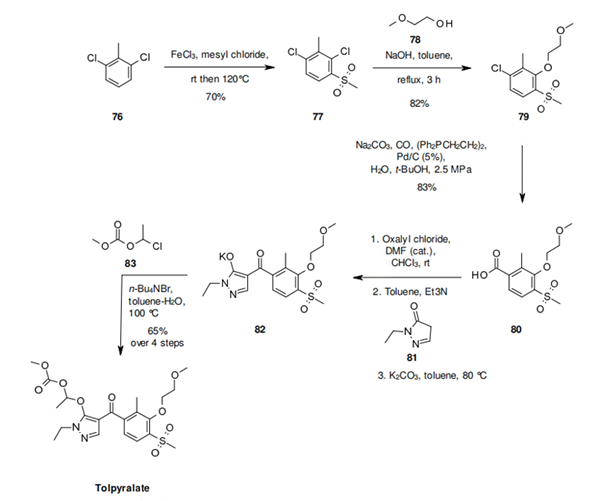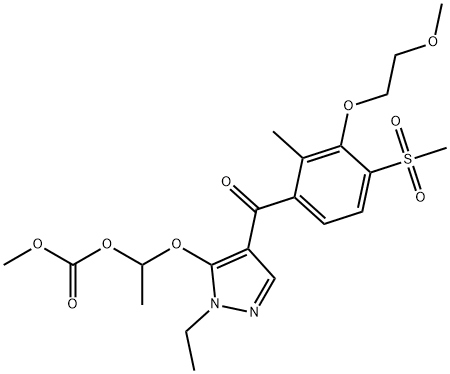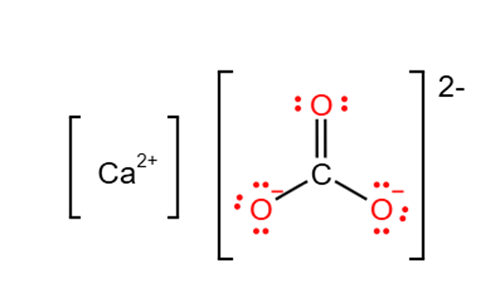Tolpyralate: Synthesis, Application and Mode of Action
Synthesis of Tolpyralate
Tolpyralate is synthesised using 2,6-Dichlorotoluene as a raw material by chemical reaction. The specific synthesis steps are as follows:

The synthesis involves the preparation of the required acid (in this case 80) and then O-acylation with a dione, or in this case the pyrazolone (81), followed by a O-acyl to C-acyl rearrangement to yield the pyrazole (82). The required acid 80, is prepared from 76, via a Friedel-Crafts reaction of 76 with mesyl chloride, followed by regioselective aromatic substitution reaction of the resultant 77 with 78 under basic conditions, and finally palladium catalyzed carbonylation of 79 under high pressure. The rearrangement chemistry discussed above yields the sodium salt of pyrazole 82, which is then alkylated with 83 under phase transfer conditions to give Tolpyralate.
Application of Tolpyralate
Tolpyralate is a HPPDi (Hydroxyphenyl Pyruvate Dioxygenase Inhibitor, HRAC Group 27) herbicide. Tolpyralate is a new selective herbicide for weed control in corn, which was discovered by ISK. Tolpyralate controls a wide range of grass and broadleaf weeds, with excellent selectivity in corn. Tolpyralate is a procide, with the active species being the molecule 82, in which the carbonate of XII has been cleaved.
Mode of Action
Tolpyralate is rapidly absorbed by leaf and stem tissue and works by disrupting an essential function in the plants physiology. Once absorbed by the plant Tolpyralate blocks the production of the HPPD (4-hydroxyphenylpyruvate dioxygenase) enzyme. This inhibits the plants ability to produce plastoquinone and alpha-tocopherol compounds. Without these compounds the formation of carotenoid pigments is interrupted causing the destruction of chlorophyll by sunlight, which is lethal to susceptible weeds. While complete weed death can take up to two weeks, once treated the weeds no longer compete with the growing corn.
);

